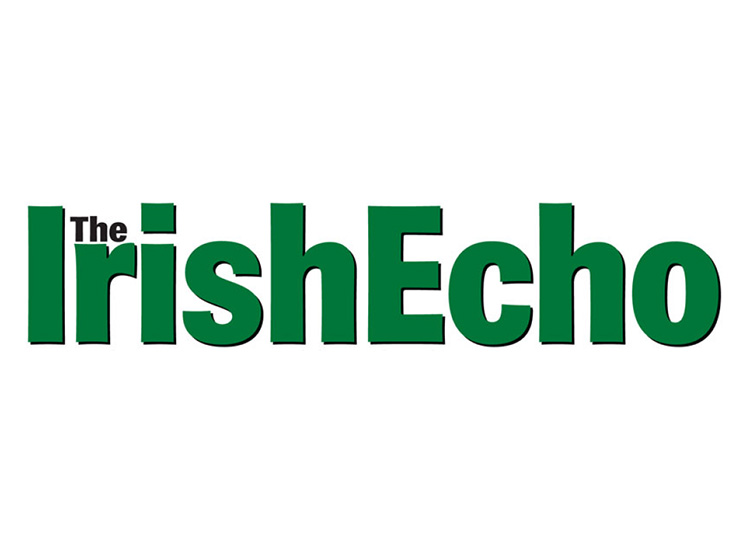The Truth Behind The Irish Famine is available online
By Jerry Mulvihill
I recently released my new book "The Truth Behind The Irish Famine."
I see it as a striking title that succeeds in getting to the very core of the darkest time in Ireland's history. Unlike other books on the subject, I commissioned 72 graphic paintings and illustrations to visualize and create a better understanding of the time.
Internationally renowned artists, Rodney Charman, Danny Howes, Geraldine Sheridan, Maurice Pierse and Jane Hillard have all contributed. All images are derived from eye witness quotes, of which there are over 400 in the book.
President Michel D. Higgins invited me to Dublin Castle where he made a moving speech about the famine and praised "The Truth Behind The Irish Famine" as a “triumph." The then Irish Minister for Tourism, Brendan Griffin, said “for generations to come people will be referencing this book and the nation owes him a debt of gratitude."
Prince Charles wrote a letter of congratulation after he received a copy of the book on his trip to Killarney. Over three years in the making, this is the book that finally dares to go there with what really happened during the worst humanitarian disaster of the 19th century.
"The Great Famine' or "Great Hunger" as it is known, was one of the most lethal and malevolent catastrophes in history. Within a decade, more than 1.5 million people died from starvation, disease, and execution, and a further two million desperately fled Ireland. These figures are merely estimates. The true numbers will never be known and are without doubt much higher.
It was not until the Armenian and Jewish holocausts one hundred years later that such an expeditious and controversial loss of life was paralleled.
In writing the book I first explored Britain’s and Ireland’s destructive relationship in centuries past. The boo reveals how the conditions for a famine in Ireland could occur. England’s 17th century military leader, Oliver Cromwell, and his vast armies, struck the severest blow and brutally decimated the Irish people, reducing the population by 41 percent. The natives that remained were forced to move to the poorest, least fertile lands in the West of Ireland. “To hell or to Connacht” was the infamous quote from Cromwell. Thousands more were shipped to Barbados and other islands in the West Indies as effective slaves though dubbed "Indentured Servants."
Shortly after, Britain enforced the Penal Laws in Ireland which stripped the people of their language, religion and right to an education. In time, the Irish were strangers in their own land, reduced to an abysmal form of peasantry and ignorance. English landlords took over vast swathes of the country. On the eve of the famine, Ireland, in its entirety, was divided into 10,000 estates, even though it had a population of well over eight million.
The Irish political leader, Daniel O’Connell, achieved Catholic emancipation for his people in 1829 but it was too late for the impoverished Irish. Britain had oppressed and segregated the Irish to living in mud huts and surviving solely on potatoes. These crops grew in poor terrain and created just enough nutrients for existence.
In 1845, a poisonous fungus swept over the country and destroyed the potato crops. During that year and in years afterward, millions of pounds worth of livestock, butter, milk, oats, wheat and barley left Irish ports annually for Britain. As the people became too weak to labour, British and Anglo-Irish landlords evicted them from their miserable dwellings, leaving them at the mercy of the elements.
One and a half million Irish people starved to death, while massive quantities of food were being exported from their country to Britain. A half million people were evicted from their homes, often illegally and violently, during the potato blight. Another 1.5 million had no choice but to immigrate to foreign lands aboard rotting, overcrowded, "coffin ships."
The famine left a scar so deep within the Irish people that it set in motion a war that would finally gain Ireland its independence from Britain in 1922.
I grew up in Ballintcleave, County Kerry. My debut title, "Let’s Read a Story," is a compilation of short stories for children that was published in the summer of 2011. It received critical acclaim from Irish media, including RTÉ’s Miriam O’Callaghan and BBC’s Graham Norton. This work was soon translated into French and sold out its first printing in just a few months.
My second book, also for children, "The Wise Owl Storybook," was released late 2012. It received positive reviews from the Irish Examiner and famed artist Pauline Bewick. It was re-printed the following year and was also released in German. I launched a third title, "The Puck Fair," in June 2014. This was a challenging departure from children’s books and involved a lot of historical research. It was launched by the Irish Minister of Arts and Heritage at that time, Jimmy Deenihan, and received glowing reviews from national media.
"The Puck Fair" sparked a great passion for historical writing which led to "The Truth Behind The Irish Famine." This was my biggest undertaking to date. It involved intense investigation and required traveling to various parts of Ireland for the duration of the project.
Growing up in Kerry, I always knew about the famine, and the ruins of that time are scattered across the landscape. I felt there were a lot of mistruths and injustices out there, and I wanted to investigate, then share what I learned.
I did this through historical eyewitness accounts and diaries. And from these quotes I commissioned artwork to create a better understanding of that tragic time.
I have been invited to give presentations on my work at major museums such as Strokestown House, Portumna Visitor Centre, and Killarney House and Gardens, to name a few. I continue to promote my work around Ireland and internationally.
Here are some of the reactions to "The Truth Behind The Irish Famine."
The President of Ireland Michael D. Higgins: “A widely researched and wonderful book.” Prince Charles: “A fascinating book that explores the tragic events of our two countries' history.” Broadcaster Ryan Tubridy: “Should be in all Irish classrooms.” Minister of State for Tourism, Brendan Griffin: “The country as a whole owes him a great deal for publishing this…A stunning and incredibly important piece of work.” Gerry Adams: “A very important publication.” The Irish Examiner: “Provides intriguing insights, highlighting the appalling things that witnesses did not speak of afterwards.” Professor Christine Kinealy: “Visually stunning, a major achievement.” Former Taoiseach and now Tanaiste Leo Varadkar: “A beautiful book.”
"The Truth Behind The Irish Famine" can be purchased online at www.jerrymulvihill.com with international shipping. The hardback edition is €30 and the paperback is €25. All copies are signed. My website also contains his two children’s books and the history of The Puck Fair. All books are available in multiple languages. I keep everyone up to date with current projects on my website.








